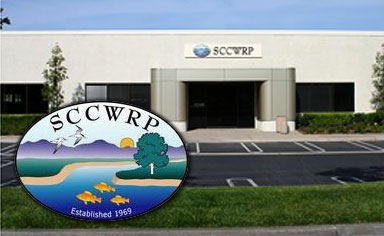California has already lost 90 percent of its estuaries to development, and is struggling to help preserve the
remaining 10 percent. The research Dr. Peggy Fong does in her lab - on the effects of human activities on the
estuarine ecosystem - quickly attains a wider sphere of influence through her relationship with coastal
managers. What she describes as one of her most important collaborations is with the
Southern California Coastal Water Research Project
(SCCWRP), a research institute that serves as the interface between scientists and the decision makers who
implement research in coastal management decisions. "Being able to interface with managers, people who make
decisions, and give them the best science that we can helps them define limits, above which negative
impacts will occur in these systems," says Peggy.
Early in her career Peggy tried communicating directly with managers, only to find that they spoke different
languages. Then about ten years ago she found out about SCCWRP - through a former student - and discovered
that there she could work with scientists who "speak the language" of policy and management. She
communicates with them about her specific research projects, and they in turn bring questions back from
the managers, which helps Peggy fine-tune her research objectives. In certain cases, SCCWRP has also been
able to provide additional funding in order to address specific research questions. By working with SCCWRP,
Peggy provides a two-way interface - she helps explain what scientists are doing so managers can actually
use cutting edge research to make decisions, and she also brings the concerns of the managers back to her
lab.
"Data I’m getting now are being implemented on a real-time basis." |
Currently Peggy is working with SCCWRP to help the state water quality control board figure out how strictly
to limit macroalgae blooms, or "green tides". Among other questions, she is trying to determine at what
point the blooms cause harm to invertebrates that live in estuarine sediments. The data her lab is
producing goes directly into the California State Water Resources Control Board's decisions on the amount
of allowable nutrients. "It has been one of the most important eye-opening collaborations," says Peggy.
"They are able to make the science immediately and practically usable to try to help sustain and preserve
these really important ecosystems."


